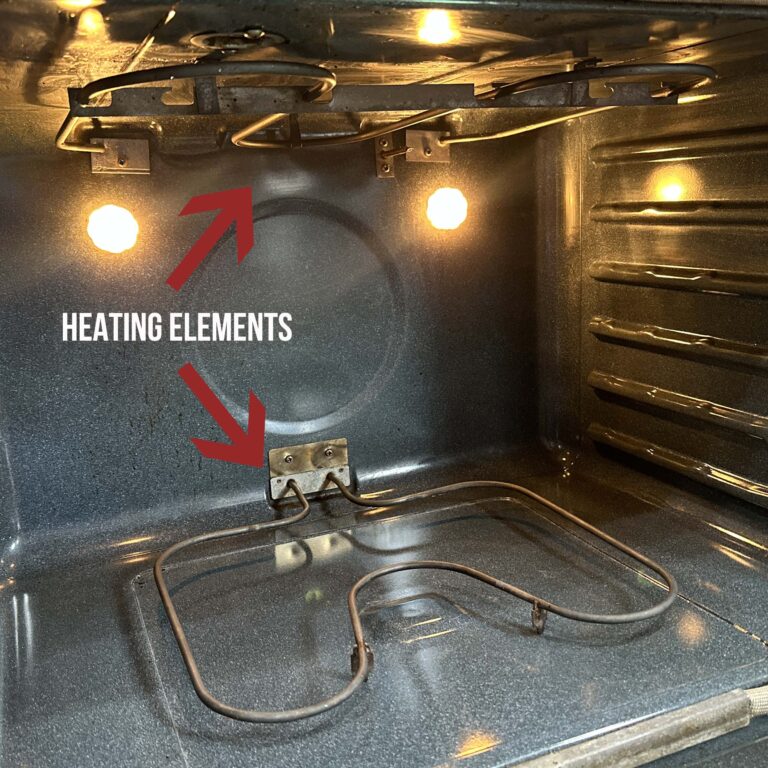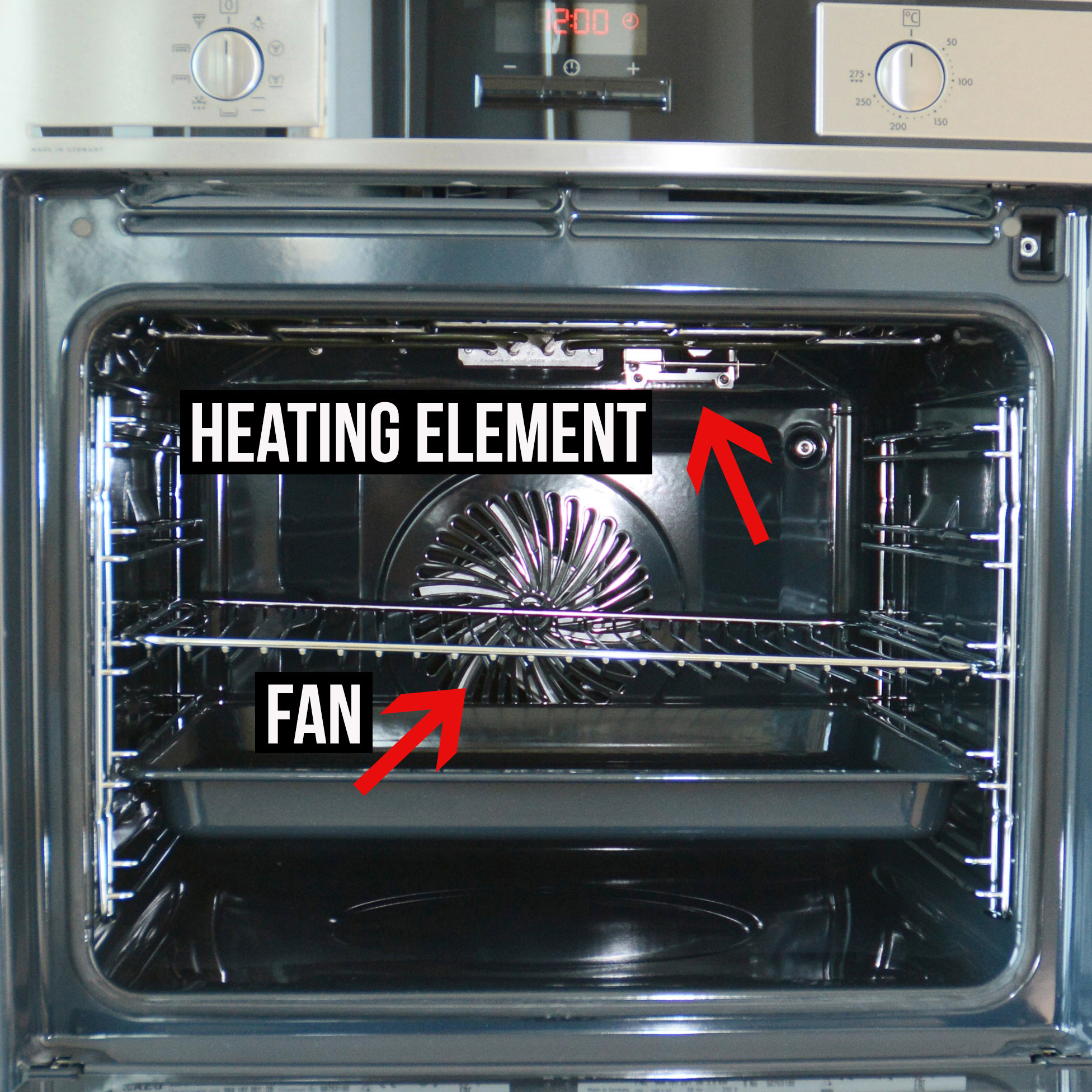How to use a Conventional Oven
Your oven is the cornerstone of your kitchen, and with a few simple tips, you can make it the most powerful cooking ally! In this post we will talk about how to use a conventional oven. You might have heard about convection ovens and wondered how they differ from conventional ovens. Before we get started let’s quickly break it down.
Conventional oven: Uses heat from the top and bottom elements.

Convection Oven: Has a fan that circulates heat for even cooking.

While both have their benefits, knowing how to use your oven is the most important. So, lets dive into how to use a conventional oven.
Understanding your conventional oven
First things first, let’s get to know your oven. A conventional oven consists of a few key components: The oven cavity, racks and the controls.
Oven Cavity
The oven cavity is where the Magic happens. It is the main cooking space where you’ll place your pans and dishes.
Racks
Your oven probably came with a couple racks. These are usually adjustable metal racks that can be moved up and down to accommodate different types of food. Knowing how to adjust your racks is important of optimal cooking.
Controls
Finally, you have the controls. These typically include settings like bake, broil, temperature and a timer. Depending on the complexity of your oven will depend on how many settings you actually have.
Inside of the conventional oven category there are 2 main types of conventional ovens: electric and gas.
The electric conventional oven has heating elements located at the top and bottom of the oven cavity. On the other hand, a gas conventional oven uses a gas burner located at the bottom the oven cavity. Both have their advantages and disadvantages. The choice between the two often comes down to personal preference and the availability and cost of electricity and gas in your area.
How to use your conventional oven
Preheating your oven
Next up, preheating. Preheating is crucial for even cooking and baking and ensures that the oven reaches the desired temperature before you start cooking. When a recipe calls for a preheated oven, it means the oven needs to reach a certain temperature before you put your food in.
To preheat your oven, simply set the desired temperature on your ovens control panel settings and wait for the preheat signal (usually a light or sound) to let you know it is ready. This can take 10-15 min depending on your oven.
For intricate recipes, you may need to preheat your oven for 45 min to an hour and make sure your oven is precisely the temperature it reads out. An easy way to measure this is to use an oven thermometer. These are cheap and easy and will tell you a lot about your oven. When I tested my oven, I found out my oven takes longer than it says on the preheating timer.
Adjusting your oven racks
The position of your racks can significantly impact your cooking results. Here is a quick guide:
Top Rack: Meaning you have the rack adjusted to the top of the oven. This is best for browning or broiling dishes. The intense heat is perfect for getting that crispy, golden finish.
Middle rack: Meaning you have the rack adjusted to the middle of the oven. This is the position I would recommend always using if you have room. This is ideal for general baking and roasting. This position allows for even heat distribution around your food.
Bottom rack: This is good for foods that you need to keep away from the intense heat from the top of the oven. Its great for dishes that need a longer cooking time at a lower temperature
Adjusting your racks is simple. Just slide them in or out to the desired level. It is best to try and adjust your oven racks before your oven heats up because the racks will still be cool at this point. However, you can move them after the oven is preheated, you will just need to use some oven mitts.
Temperature Settings and Cooking Modes
Baking – Standard mode for most recipes, using heat from the top and bottom. Typically the default setting in my book. This is what I always choose unless I need to broil something. It will have a default temperature that it automatically goes to, it is usually somewhere between 325-375º.
Broiling – Direct heat from above. Usually defaults to a very high heat, around 500º F. This setting is perfect for browning the top of a dish.
Warm: Keeps food at a serving temperature without further cooking
Using a timer is pretty important if you ask me. It protects and prevents overcooking. I always like to set my timer a couple minutes less than what I think or what the recipe calls for so that I can watch carefully for precise results.
Tips for Even cooking and baking
Rotating Pans: Halfway through the cooking time, rotate your pans to promote even heat distribution and prevent hot spots.
Use Baking stones or sheets: These can enhance heat distribution and improve the consistency of baked goods.
Avoid Overcrowding: Ensure proper air circulation by not overcrowding your oven. This allows heat to circulate around your food, ensuring it cooks evenly.
Cleaning and Maintenance:
It is amazing how dirty an oven can get even if you don’t spill anything in it. Regular cleaning will help with efficient cooking.
Regular Cleaning: Make sure to wipe up spills and splatters as they happen to avoid buildup.
Most ovens have a Self cleaning feature. If your oven has this feature, it heats the oven to a high temperature to burn off residue. Follow the manufactures instructions for best results.
Manual Cleaning: Oven cleaner works wonders but check on your manufactures instructions to make sure it won’t corrode the interior lining. Some people say a paste of baking soda and water works too. You apply the cleaner to the interior, let it sit and then scrub it clean.
There you have it! With these tips and tricks, you’re well on your way to mastering how to use your conventional oven. Remember, understanding how your oven works and making the right adjustments can significantly improve your cooking and baking results. Don’t forget to share your own tips or ask questions – I love hearing from you and helping you on your kitchen journey.






